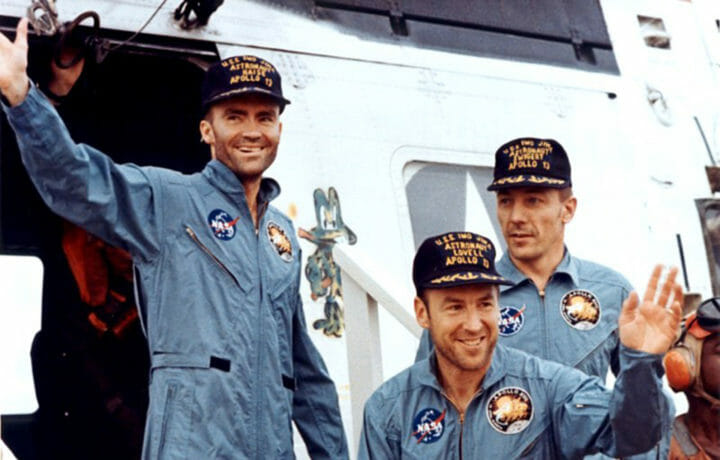“Houston, we’ve had a problem.” ― Jim Lovell
Few people would characterize a glaringly public failure as a success. When the entire world is watching you fail, it’s difficult to see the silver lining, the light at the end of the tunnel. When your failure is dissected again and again as a matter of public discourse, finding a bright spot might seem challenging. But none of us are Jim Lovell.
When Apollo 13 launched on April 11, 1970, it was supposed to be another routine flight to the moon. When Odyssey – the command module – splashed down six days later in the South Pacific, the mission had proved to be anything but routine. Barely 56 hours into the flight, a short circuit inside the service module’s number two oxygen tank sparked a fire that destroyed it and compromised the number one tank. NASA aborted the mission and refocused their efforts on bringing the crippled ship back to Earth. Technically, the mission may have been a failure, but the lives of three astronauts were hanging in the balance.
An estimated 40 million Americans watched the harrowing return of the Apollo 13 crew as one crisis after another played out on national television. Even 50 years later, I remember those moments vividly, watching Walter Cronkite explain in detail what was happening at each juncture. While I didn’t understand everything that I was seeing and hearing, I was just old enough to grasp what was at stake and how critical it was to bring those three men home alive. Along the way, I also learned that failure didn’t have to be a bad thing – it could be just one more step on the road to success.
Take control.
In the moments following the accident, everyone aboard Odyssey knew something had gone terribly wrong, they just weren’t exactly sure what that something might be. An experienced military leader with three previous missions under his belt and more time in space than any other NASA astronaut, Lovell’s calm and level command presence saved all of their lives. Faced with seemingly insurmountable odds, he quickly assessed their condition, began to collect critical information, and took control of the situation.
Maintain a positive attitude.
At no point during the mission did Lovell and his crew succumb to the belief that the mission would end in catastrophe. Instead, they maintained a singular focus on their successful return, against all odds. That positive mindset came to define the crew, both during and after the mission.
Stay confident.
In the aftermath of failure, losing confidence in yourself and others is understandable. To err is human, after all. Regaining your confidence after a devastating failure may seem like an impossible task, but it’s where success truly becomes attainable. In his 1994 book, Lost Moon: The Perilous Voyage of Apollo 13, Lovell admits there were moments when they questioned themselves and NASA, but they never lost confidence in their ability to return Odyssey to Earth.
Take action.
During the hours and days that followed the accident, Lovell and his crew were anything but passengers aboard a sinking ship. From the moment the astronauts heard a “pretty large bang”, they sprang into action. Even as their mission to the moon faded into the blackness of space, their new goal – make it home alive – became their immediate focus. No matter how minute, each action from that point on helped build momentum toward a return trajectory and an eventual splashdown in the South Pacific.
Don’t let failure define you.
Despite the failure of the Apollo 13 mission, Lovell refused to be defined as a failure. In a 1992 interview, he referred to the mission as a “successful failure.” Viewed through the lens of history, Apollo 13 is seen as a triumphant success of human ingenuity and Lovell as a remarkably successful leader who brought his ship home in the face of certain death.
“One by one, each crisis was met and overcome, successfully.” But, as Odyssey entered Earth’s atmosphere at 11:53 a.m. on April 17, 1970, no one was sure if the accident had damaged the command module’s heat shield and, if so, could it withstand the heat of re-entry. The astronauts had done everything they could do. So had NASA. The four-minute loss of communication due to ionization around the command module during re-entry was extended to six minutes by their shallow return trajectory, fueling fears the heat shield had failed. But Odyssey emerged from ionization blackout and, ten minutes after entering the atmosphere, splashed down safely 3.5 miles from the USS Iwa Jima. The astronauts were understandably fatigued, but safe and in good condition. The mission was complete: Apollo 13 was a brilliant failure and Lovell an equally brilliant leader who chose how to define himself in the eyes of history.




